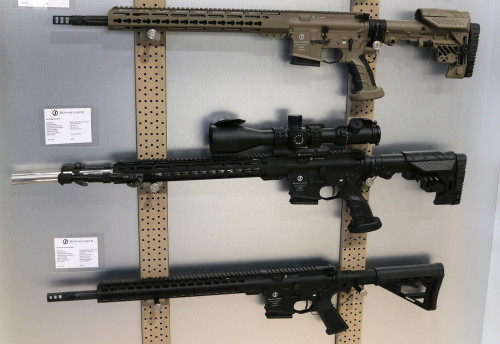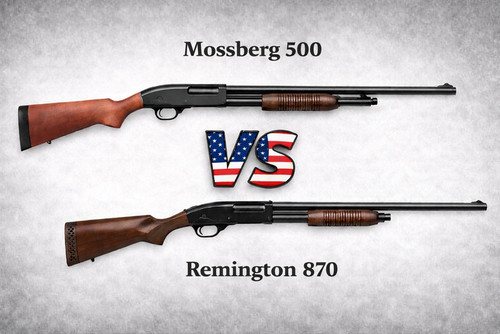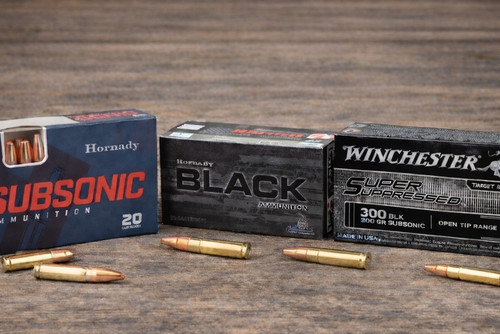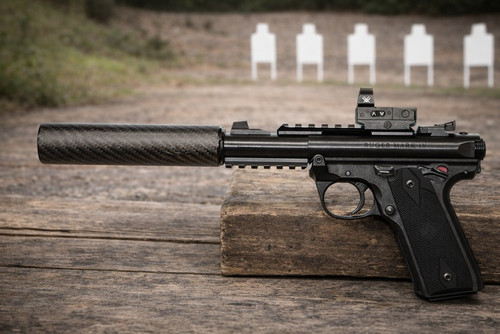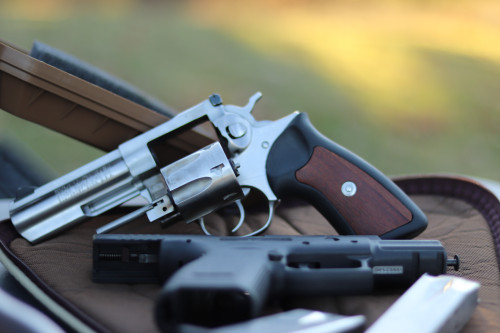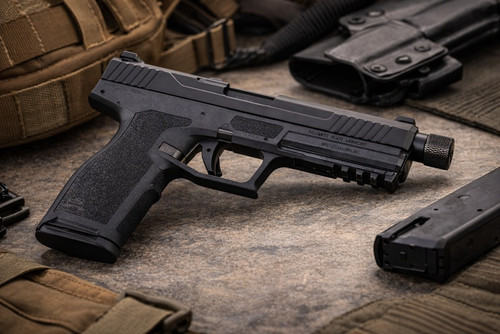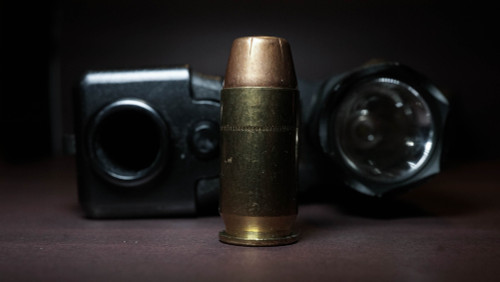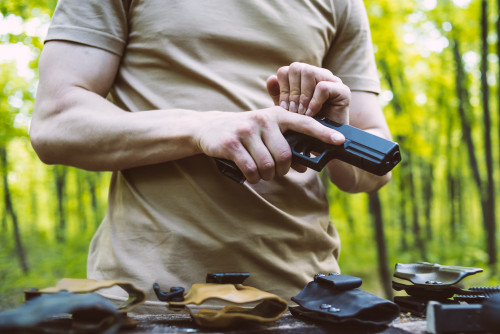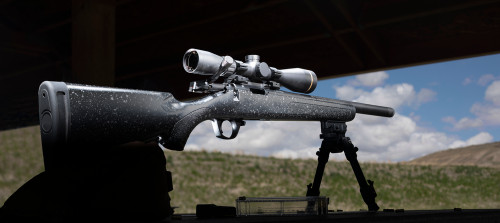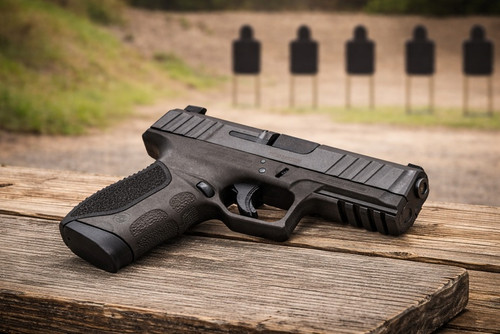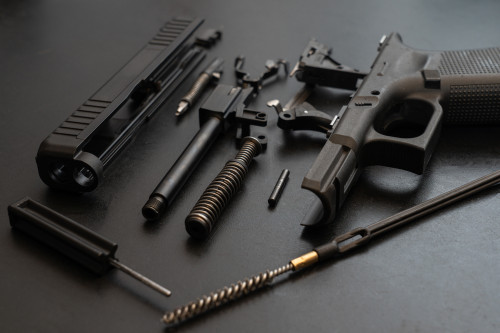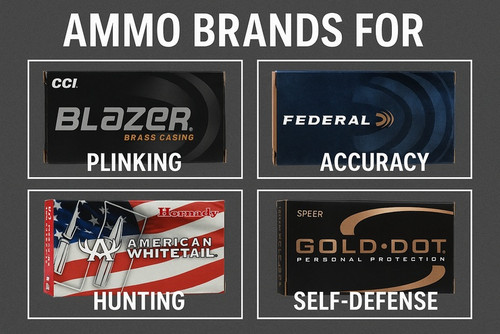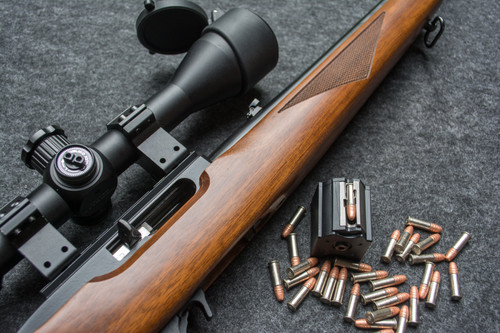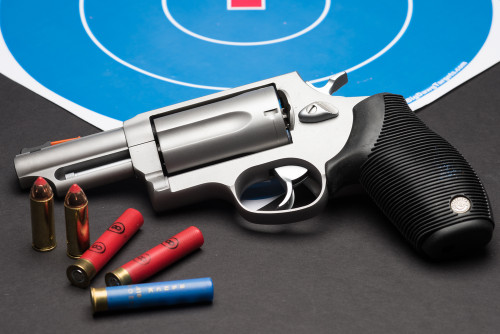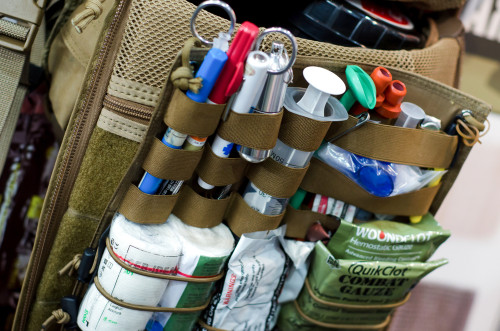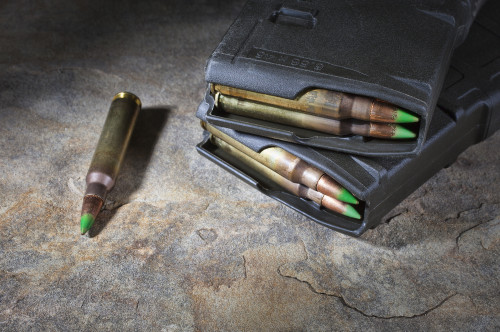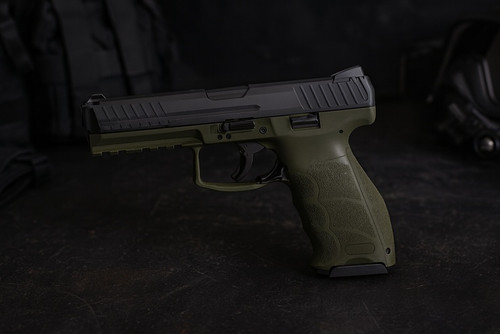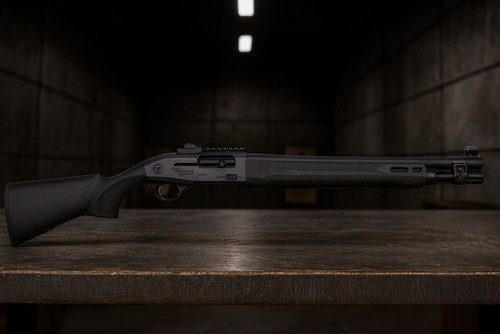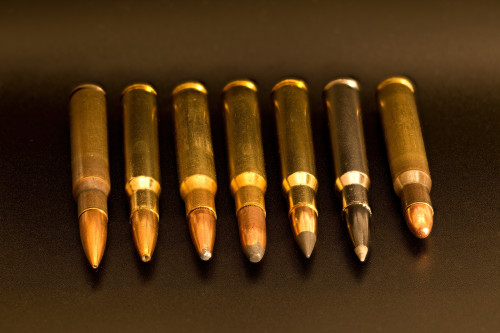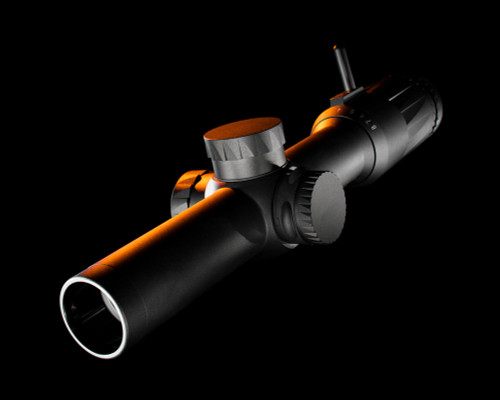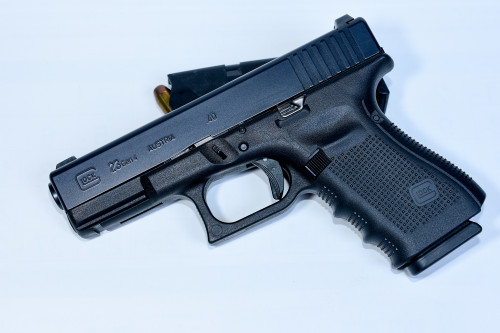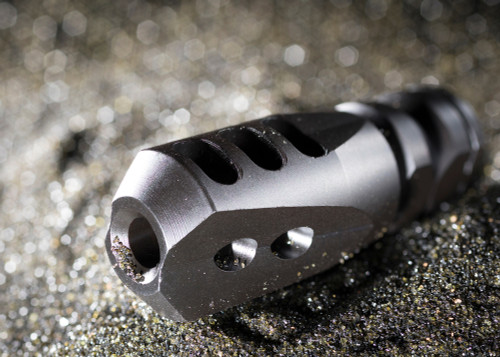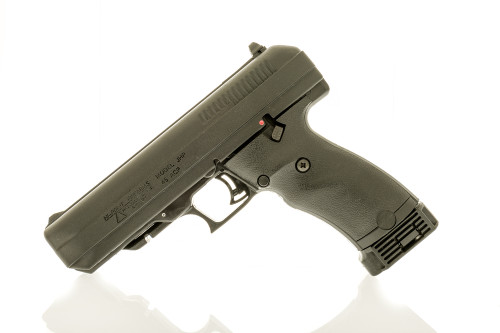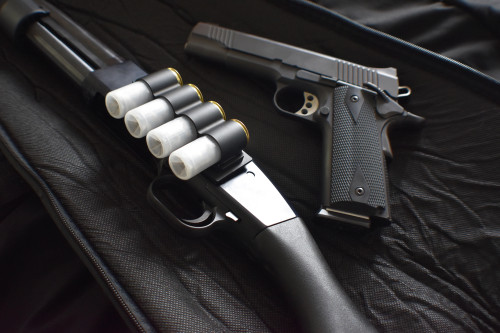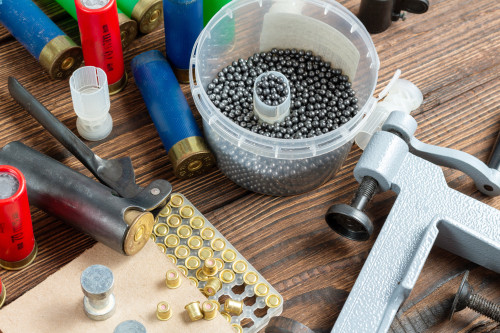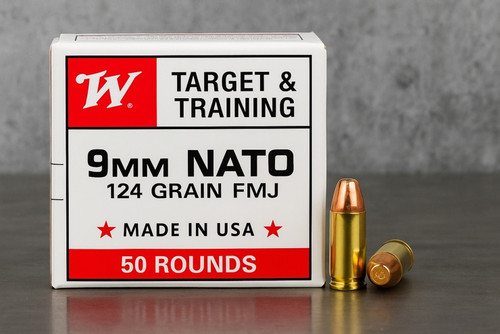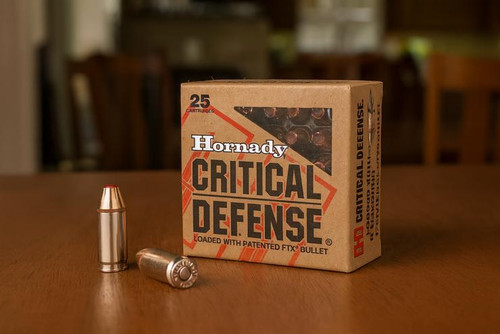It’s no secret that untold millions of firearms are transferred into citizen hands every month in the United States. One of the most popular types sold is the AR-15 rifle. But the wildcard in 2024 and beyond is economic uncertainty. While you recognize the need to be armed (especially in these crazy times) your bank account often dictates what you can own.
Of the many different AR-15 models on the market, many appear similar and generally function in the same manner. That makes it hard to justify spending $2400 on a slick Daniel Defense DD4 RIII (versus spending $400 on a Palmetto State Armory PA-15). After all, with either rifle, the gun still goes bang when you press the trigger. Truth be told, both weapons shoot reliably and accurately, and a shot from either would be enough to neutralize a real threat.
So, what’s the deal with the cost difference?
Digging into the details about engineering behind AR-15s and their price points, you’ll find there’s a lot more to consider than brand reputation. Just like in the automotive industry, you’ll pay a premium for engineering precision, metallurgic materials, long-term reliability, ergonomics, accessorization, weight, and overall functionality. At the same time, brand reputation does still matter, with the higher-tier manufacturers such as Daniel Defense, LMT, and Heckler & Koch, charging a little more just because they can.
You’ll also pay for the various “stops” along an AR-15’s journey from the factory into your hands. Depending on the brand, this can include numerous locations, all of which increase the price.
Obviously, there’s a lot going on here. So, how do you know if your gun dealer is overcharging you? How do you know what’s worth the extra dough, and what’s overpriced? If you want to learn just what goes into the cost of an AR-15 — this is your guide. Let's take a look at all these details to answer the question: how much do AR-15 rifles really cost?
How Much Does an AR-15 Cost?
First and foremost, AR-15 costs vary wildly — so much so that it’s tough to even assign an average price. At the same time, it’s difficult to “screw up” an AR-15 build, meaning both budget and premium options will serve you well. For the most part, price differences come down to materials, workmanship, customer support, and brand reputation. Here are a couple of examples to illustrate the vast differences:
Budget Option
An off-the-shelf PA-15 from Palmetto State Armory is a budget AR-15 that costs $500 as of 2024.
It’ll go bang 99 percent of the time, and the components fit together, but may rattle a little when you manipulate the firearm. The workmanship is acceptable, but you may see rough edges and dings here and there. But PSA will stand by their product, and their reputation is “entry level” with a dash of good customer service.
High-End Option
On the other end of the spectrum is the Mercedes-Benz of the AR world: the Heckler & Koch MR556. Based on the select-fire HK 416 used by the door-kickers of the special operations world, the MR556 easily costs more than $3000 as of 2024.
Again, it’ll go bang, 99.999 percent of the time, even under duress. The fit and finish is phenomenal, and all the components are made in-house by H&K, either in their Georgia facility or in Germany for parts not subject to export controls by the German government. Even their operating mechanism is custom, and technically won’t work in any other AR-15, as it’s a piston design, and not a traditional direct-impingement system.
Despite the online rants, H&K stands behind their work and will do everything in their power to make things right for anything that is their fault. And yes, you’re paying for the name. People expect H&K guns to be expensive, so H&K obliges.
That being said, there are numerous other factors which influence AR-15 costs.
Factors Influencing AR-15 Rifle Cost
When the cost of an AR-15 is calculated, several factors come into play, including material composition, engineering time and effort, included accessories, marketing efforts, (and yes, brand reputation).
Basic AR-15 Design
As of 2024, the AR-15 design and specification is nearly 70 years old. Although the materials used to make a basic AR-15 have changed over those years, an AR-15 part made several decades ago will usually work with an AR-15 made today.
You could take the lower receiver from say, a Colt SP-1 (the first AR-15 made for citizen use in 1964) and mate it to a 2024 complete upper from Daniel Defense, and the whole ensemble would function. However, it might have parts of mismatched colors. Older AR-15s tended towards a dark gray finish, while modern ARs are generally solid black.
This is because the M16/AR-15/M4 design is specified in the Technical Data Package (aka the TDP).
What Is the TDP?
You’ll see this term kicked around in firearms forums, and it’s real graduate-level stuff. TDP defines each and every dimension of a complete “standard” M16/AR-15/M4. The TDP is currently “owned” by Colt, and for military rifles, Colt licenses it out to other manufacturers at the behest of the US government.
The TDP is easy to find online. It’s not classified information, just proprietary. The other companies who make AR-15s follow the TDP, but always include parts made to different tolerances so as to avoid legal issues with Colt.
What Is Mil-Spec?
Though much abused by the marketing departments of firearms companies, “mil-spec” simply means that a piece of gear meets a military specification. If you really take a deep dive into the TDP, you’ll find that it specifies materials and processes in addition to dimensions. To meet the military standard, all you have to do is produce the component in the way defined in the TDP.
If you produce the component and its specifications exceed the standards in the TDP (but it will still fit in an AR), you’re good to go, and you’re going around the TDP on a mere technicality. Most designs that exceed the TDP are able to charge a bit more for that extra effort. In fact, the real hardcore AR fanatics out there consider “mil-spec” to be somewhat of an insult.
Quality and Materials
Scientific wizardry aside, the materials of most AR-15 components have remained the same over the years, chiefly being various grades of aluminum and steel. The differences between models are where price changes come into play.
Metallurgy
Typically, a reputable manufacturer of an AR-15 will list these materials in the specifications for the rifle. 7075-T6 aluminum is most often cited, and it’s usually what upper and lower receivers are forged and milled from.
Metallurgy numbers define the composition and tempering process of the aluminum. Generally the higher the number, the stronger the material, but materials of higher strength are more difficult to machine, which drives up cost. It’s also why some less-critical components like handguards are made of a lower-spec aluminum such as 6061-T6, as it’s easier and faster to machine, although not as durable.
There is also the question of whether the receiver and other parts are stamped or forged and milled. Stamped parts (parts cut from an existing piece of metal) are cheaper to make and much lighter, meaning they don’t cost as much to purchase on the consumer end. However, stamped parts tend to be less durable. On the other hand, forged and milled parts are more durable and more expensive to make (since it requires the physical heating and shaping of metal). That cost gets passed on to the buyer as well.
Operating System
Critical AR-15 operating system components add more materials science into the mix. They’re made with a dizzying array of grades of steel, such as Carpenter 158 for the bolt itself, and case-hardened 9310 steel for the bolt carrier assembly. The higher the grade of steel, the more costly the component.
For example, a basic bolt carrier group from a discount supplier may use a lower-grade steel for the carrier, to bring their BCGs in at around $100. However, a top-tier manufacturer such as BCM will not cut corners and use 9310 in the carrier and Carpenter 158 in the bolt itself. As a result, the price point for that will come in at $175 or higher.
Coating
Most AR-15 components are also treated with a coating for enhanced durability and appearance reasons. Cerakote-treated receivers and handguards will be significantly costlier than untreated parts, often to the tune of many hundreds of dollars more. On mission-critical components, coatings are the name of the game, with nickel-boron and titanium-nitride being popular options among high-spec bolt carrier groups.
Again, a basic parkerized (matte-gray) mil-spec bolt carrier group will come in at around $100, and an TiN-coated variant will cost double or more of that price.
Material Production
The higher-spec AR-15 components are often out of stock, or only sold in limited quantities. This is both for marketing and production reasons. Manufacturing to tighter and more precise tolerances takes time and effort. A technician has to spend more time calibrating their machinery to achieve that last 0.001 percent of accuracy, often producing a lot of duds during the prototyping phase. Precision milling and the application of coatings also takes up more time.
For an example, let’s say a basic OEM Toolcraft bolt carrier group takes X minutes to mill and assemble. The bolt carrier group is purely mil-spec, phosphate-coated, and tested according to the TDP. Toolcraft can make say, 100 of those per day.
Meanwhile, for Azimuth Technology, another OEM, their BCGs take X+60 minutes to mill and assemble. Their BCGs exceed military specifications, and are finished with (for example) nickel-boron. They can only make 50 per day, but they are pound for pound more durable than the mil-spec units from Toolcraft (even though the Toolcraft BCG will still serve you well in general). That extra precision takes both time and talent. Azimuth has to pay an employee to dial in the machinery, ensure the tolerances are on point, and so forth. That cost is passed on to you, the consumer.
Aren’t Lower-Spec Components Fine for Civilians?
Unless you have a kick-ass gun room, most civilians can’t usually just pop by an armory and get another bolt carrier group if theirs fails. So, if you’re building your AR from scratch or modifying it, it may be wise to purchase a higher-spec BCG such as one made by Azimuth. It may cost more than double, since it’s dialed in like a charm and coated with the latest unobtanium — but that BCG will last for tens of thousands of rounds (even dry). Your wallet might say “ouch,” but you’ll be glad knowing the higher-spec components will last.
That said, lower-spec components can serve a civilian user just fine. After all, you probably aren’t using a fully-automatic AR-15 in the trenches of war, so your rifle probably isn’t subject to hard use or extreme environments.
Surprisingly, some “consumer” components hold up extraordinarily well over time, even with heavy abuse in testing. Check out the recent stress test from Garand Thumb where he takes an off-the-shelf AR-15 upper from Palmetto State Armory, mates it to a full-auto lower, and abuses it over a grueling course of fire spanning 6000 rounds in a short period of time. The PSA upper held its own, with accuracy and functionality only beginning to degrade around the 6000 round mark. In your average usage, this number could be doubled, since you most likely aren’t doing massive full-auto mag dumps over the course of a few days.
Brand Reputation and Influence
Simply put, a quality brand will develop a positive reputation, which means they can charge accordingly to cover their costs and make a profit to continue their operation.
To maintain a positive brand reputation, an AR-15 manufacturer not only has to pay for top-tier equipment, materials, and engineering talent — they also need to pay some “below the line” expenses, which will usually incur a small price premium, depending on the amount they invest in each one.
Marketing
Even top-tier firearms companies such as FN or Daniel Defense will need to invest in marketing for their quality products. While word of mouth is a critical and “free” marketing tool, relying on that tactic alone will only reach a small segment of consumers.
Top-tier manufacturers spend princely sums of money trying to reach potential new customers through either traditional print media or digital methods such as social channels, expert influencers, and bloggers.
For example, a new user of ARs may only know of Smith & Wesson or PSA, and not realize that Heckler & Koch makes top-tier AR-pattern rifles, or that FN makes semi-automatic variants of its M4s for citizen use. Additionally, more esoteric companies such as LMT will often engage in focused advertising campaigns to expand their influence beyond the “nerds” on forums like ar15.com.
Pure Brand Value
Higher-spec brands will charge a little more for their AR-15s simply because they can. You expect an H&K MR556 AR to cost a lot, since it’s German-designed and made to exceed military specifications. For example, that MR556 AR could actually be sold for $2900 and H&K would still make a profit. But they’ll upcharge you because you expect to pay north of $3000 for an H&K rifle. This concept is similar to how Apple operates in the computer realm — to some degree, you’re paying for that logo on the back of your laptop.
Similarly, with other established brands, you’ll pay for their legacy and expertise. You aren’t paying $1100 to Colt for that CR6920 AR-15 that can be produced in about an hour; you’re paying for Colt’s 169 years of experience making some of the most influential, definitive, and reliable firearms in the world.
Customer Service
A higher-tier AR manufacturer will also invest in maintaining their brand reputation through excellent customer service. In many cases, they want to avoid the following sequence of events:
- A gun owner experiences a statistically rare failure in the firearm itself, causing injury (or nearly so).
- The brand subsequently fails to follow through with excellent customer service, thereby damaging their reputation even more.
A top-tier manufacturer will recognize that yes, products fail on occasion. An excellent manufacturer will go above and beyond to make it right, and maintain their stellar reputation. Of course, having the systems and staff capable of delivering amazing service costs money, and that cost is passed on to you.
Included Customizations and Accessories
The magic of the AR-15 platform is that it is easily customizable with a whole universe of accessories and components. You can source a basic AR-15 from Palmetto State Armory and then follow up with quality upgrades from affordable vendors like Pro Armory to dramatically improve your ability with your rifle.
AR-15 Accessories: Customize your rifle to your liking with tactical gear and optics you can afford.
Basic upgrades like triggers and handguards often only require common hand tools and a bit of reading to install. However, these upgrades, as well as more complex ones like barrel swaps and muzzle device changes, do take time (which you may not have). Also, some manufacturers may void warranties if you upgrade them on your own.
Because of this, most AR-15 manufacturers will offer factory-ready AR-15s with popular customizations and upgrades already installed. For example, Palmetto State Armory includes a premium Geissele trigger on their basic AR-15 complete lowers. This saves you the time and effort of installing the trigger yourself. Plus, PSA will also honor their warranty, since they installed the trigger themselves before the product was sold. However, this usually results in a markup.
Many manufacturers will also install more complex accessories such as muzzle devices at the factory. Whether it’s to compensate for recoil or ready your AR-15 to accept a suppressor, muzzle device installation requires specialized tooling such as an armorer’s wrench, a sturdy workbench, a vise grip, specific washers, and Loctite. You may not have these lying around the house (nor does it make sense for you to buy them when you’re just looking for an AR that works). Again, you’ll pay for the convenience of this pre-installation.
The Real Source for Firearms Accessories
The dirty little secret of the AR industry is that a lot of manufacturers don’t truly make their AR-15s in-house from top to bottom.
For instance, Brand X manufacturer may source unfinished receivers from a big firm such as Cerro, the barrels from FN, the bolt carrier groups from Azimuth, and the handguards from Geissele. They’ll have all those components on hand, finish and assemble according to their specs, put their rollmark on the side, and sell it as their own.
Even basic accessories such as traditional BUIS “iron” sights are usually sourced from another manufacturer. Even if they manufacture their AR-15 in-house, they will source the accessory from Magpul in bulk, and fit the sight to the AR during assembly.
This isn’t necessarily a bad thing. Investing in the equipment to produce an AR-15 from raw aluminum, plastic, and steel is very cost-prohibitive. If every brand produced and assembled their guns from top to bottom, we consumers would pay a lot more for our precious rifles.
(Souce: https://guncreed.com/)
AR-15 Cost Chart
Now that you understand how different factors influence the cost of a new AR-15, this breakdown shows how much influence each factor bears on the total cost. Of course, these are rough figures and markups will vary over time.
You’ll notice that top-tier manufacturers sometimes have a lower markup for brand reputation. While you may pay more for a top-tier brand, they often don’t need to pass on marketing costs to the consumer as much as a mid-tier brand. That’s because their word-of-mouth marketing is powerful enough (or they have enough government contracts to subsidize the citizen products).
| Factor | Base “Value” | Mid-Tier Markup | Top-Tier Markup |
|---|---|---|---|
| Workmanship | v | v + 20% | v + 60% |
| Brand Reputation | v | v + 10% of above | v + 5% of above |
| Accessories | v | varies | varies |
NOTE: Accessories are somewhat of a fixed cost. For example, H&K can't charge $500 for a Magpul BUIS because we all know a set of Magpul irons costs about $150 or less. So the markup may vary based on the SKU included with any factory-ready customization. The only way to apply a consistent percentage markup is when the accessory is made in-house by the AR-15 manufacturer.
AR-15 Cost Breakdown
Let’s look at some examples. (NOTE: These are just estimates based on available data and should be used on a guideline basis only).
Example 1: PSA PA-15
As of this writing, a PSA PA-15 is under a “Daily Deal” of $479.00 minus shipping, taxes, and transfer fees.
Palmetto State Armory openly admits they make basic AR-15s since their goal is to get one into the hands of everyone. The PA-15 goes bang, runs well, and will competently serve an average user over the course of a lifetime. The workmanship is acceptable, though you may notice some rattling between the upper and lower receivers.
Accuracy is acceptable enough for the usage of most users. It’ll work well at the range and protect you during a defensive encounter. In terms of reputation, PSA is known for budget firearms and occasionally some lemons make it past quality control. But PSA will stand by their products and gladly rectify any issues that arise from their own mistakes.
Example 2: Aero Precision AC-15
Clocking in a shade under $700 depending on options, you’ll pay a premium for the mid-tier Aero Precision’s AC-15, compared to the PSA model.
Aero Precision has roots in the aerospace industry, and they go the extra step with workmanship. The AC-15 will run better than the PSA offering, with less chance of a show-stopping failure, and serve average users and even some pros (think suburban police departments) well for a lifetime.
The workmanship is superior to the PSA AR-15, with more tight fitment between critical components, sometimes with upgraded alloys. Accuracy is superior to the PSA model, but users may have to “grow into it” to see a tangible difference. Like PSA, Aero stands by their products, and also gladly answers technical questions regarding their firearms including real nerd stuff like alloys and the like.
But this “precision” takes more time to manufacture. For example, in the time it takes Aero to finish one rifle, PSA can (hypothetically) crank out three. Aero Precision rifles are frequently sold out, if that’s any indication.
Example 3: Daniel Defense DDM4v7
For top-of-the-line, a Daniel Defense DDM4v7 AR-15 starts at a little over $2000 (varies frequently between $2000 - $2150), and you’ll certainly pay a major premium over both the Aero Precision and PSA models.
Daniel Defense is a “tier 1” military contractor. Select-fire versions of their weapons are in the hands of various elite military units throughout the world. Think “Zero Dark Thirty” types. In other words, these rifles have been tested in the most demanding situations in history, and their civilian semi-automatic ARs are prized for this pedigree.
The DDM4v7 can handle the extremes. Dirt, dust, mud — go ahead, bang it around. It’ll shoot when you need it to. Show-stopping failures are almost unknown, and if it serves a pro well, it will serve you amazingly. The Daniel Defense workmanship is excellent. There’s no “rattle” of components, and each accessory is made in-house. No Magpul or other white-labeled brands — even the magazine is a Daniel Defense offering. Materials are made with the best industrial processes and coatings, and designed for the ages. The accuracy is bar none, and you’ll definitely have to grow into the DDM4v7 before you can “outshoot” it.
If you’re not happy with a Daniel Defense AR, it’s definitely a you problem. Daniel Defense stands by their products and provides customer service at an unusually personal level. If you have a problem, you get a name at the office to contact. Of course, all this comes at an extreme premium, as you can see. You’re paying for the reputation, the reliability, and the support.
The Market Dynamics of AR-15 Costs
Like any item produced in a free economy, the dynamics of supply and demand drive prices. During “panic” times, demand heavily taxes supply, and companies often have to invest in more labor and machinery to keep up.
Politics and World Events
Remember the “perfect storm” of the summer of 2020? Civil unrest, COVID, and the looming federal election had pretty much every firearms dealer running out of stock for months on end. In response, manufacturers increased their output, putting their factories on 24/7 production. This drove up costs, since workers had to be paid, additional machinery acquired, and so forth. The manufacturers also wanted to quickly cover their capital expenditures (since at the time they didn’t know if or when the market would cool off).
Of course, we all know how the 2020 election turned out. This time around, the investments proved to be quite wise, as the Biden administration has been less-than-friendly to gun owners (especially AR-15 buyers).
Compliance
Compliance also drives up the cost of AR-15s in states where specific features are forbidden (requiring the substitution of modified parts). Some manufacturers will run a “California Compliant” AR-15, which can cost slightly more due to the inclusion of the “fin” grip, and a lower production volume. Manufacturers will pass the cost of the accessories and the attention to detail required for such compliance onto consumers.
Pop Culture
On a more positive note, pop culture can increase the value of certain AR-15 brands. For example, the AR-15 featured in the John Wick franchise costs over $4000 for two primary reasons:
- The reputation of its designer, Taran Butler.
- The specific brand appears in one of the most successful action movie franchises of all time.
You’ll see the same trend among ARs with “sci-fi style” accessories attached, such as grips from Hera out of Germany.
Practical Considerations for AR-15 Buyers
Of course, we all want that “dream” AR-15. You saw it in John Wick, you saw some cool attachment in a Fast & The Furious installment — and now you’re drooling over them like a Farrah Fawcett poster in the 1970s. No shame in dreaming, kid.
But sometimes, the gun of our dreams is out of our league. Sure, it looks cool — but the ultimate arbiter is your budget. A $4000 TTI AR-15 is not on the table if you don’t have the funds or the credit limit.
So, consider the reality of your situation.
Budget Options Are Just Fine
If you want to use your AR for recreational or home defense purposes, there’s nothing wrong with buying a budget-friendly AR-15 from Smith & Wesson or Palmetto State Armory. S&W AR-15s even make it into the hands of patrolling law enforcement officers. They work well enough, are reliable when maintained correctly, and are easy to use.
Those budget-friendly options will serve you well for a lifetime, even if you’re putting thousands of rounds a year down the pipe. Put it this way — if you have the funds to put 15,000-20,000 rounds downrange, you can afford a $250 barrel swap when the first one wears out.
Be Realistic About Your Skill Level
None of us are Jerry Miculek. We aren’t measuring our accuracy with micrometers and rangefinders. We’re looking to achieve a practical level of accuracy on the range or in a (hopefully hypothetical) real-world situation.
In this case, a rack-grade Colt CR6920 (basically a semi-auto version of a military M4) will serve you well. In a real-world encounter, if the threat is neutralized, sub-MOA accuracy won’t be on anyone’s mind.
Budget for More Than the Gun
Don’t forget: you’ll also want to budget for the costs of ammunition, training, and vital accessories such as a sling, carrying case, optic, magazines, cleaning kits, and basic tools. Don’t spend all your money on a top-tier AR-15 and neglect the other pieces that allow you to use it effectively. Besides, a budget AR in trained hands is more effective than a top-tier AR in untrained hands. With the latter, you’ll miss the target very precisely unless you’ve spent the funds on training and proper accessories.
Final Thoughts
There’s a lot that goes into the cost of an AR-15. Engineering, manufacturing, brand reputation, included accessories, and even marketing all factor into the final cost of America’s Rifle — no matter what iteration you choose.
In the end, the driving factors for your purchase should be your use case, budget, training costs, and reliability. In the vast universe of AR-15 models, there’s bound to be one that will fit you perfectly.
Looking to build or purchase a new AR-15? Outfit your new rifle with quality accessories you can afford at Pro Armory.
Don’t forget to stock up on ammo, either. Keep that hungry little newborn AR fed and happy with our expansive selection of ammunition for every occasion.



